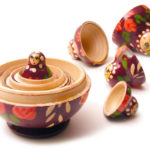CRM-TRAINING
- CRM-TRAINING ΑΘΗΝΑ-ΘΕΣΣΑΛΟΝΙΚΗ(2024-25)
- CRM-TRAINING ΑΘΗΝΑ-ΧΑΝΙΑ (2023)
- CRM-TRAINING ΑΘΗΝΑΣ(2021-22)
- CRM-TRAINING ΑΘΗΝΑΣ(2020)
- CRM-TRAINING ΑΘΗΝΑΣ(2018)
- CRM-TRAINING ΘΕΣΣΑΛΟΝΙΚΗΣ(2016)
- CRM-TRAINING ΑΘΗΝΑΣ(2016)
The CRM was developed by Lisa Schwarz, Licensed Psychologist, as a therapeutic modality to remember, re -process, and release traumatic material from the nervous system in order to provide the opportunity for re – connection to one’s true self, the meaning of the truth of one’s life, and to the ability to embody love in one’s actions.
What is CRM?
The Comprehensive Resource Model (CRM) is a neuro-biologically based trauma treatment model which facilitates targeting of traumatic experiences by bridging the most primitive aspects of the person and their brain, to their purest, healthiest part of the self. This bridge catalyzes the mind and body to access all forms of emotional trauma and stress by utilizing layers of internal resources such as attachment neurobiology, breath work skills, somatic resources, our connection to the natural world, toning, and sacred geometry, and one’s relationship with self, our intuition, and higher consciousness. The sequencing and combination of these resources, and the eye positions that anchor them, provide the opportunity for fear responses to be cleared thoroughly while the client is fully aware and present moment to moment. CRM allows individuals to effectively orient fully towards the most frightening material, uniquely accessing and clearing the origin of the split second moments of intolerable threat and/or affect that result in defense responses which lead to life-interfering symptoms, addictions, and disconnection from self and others. The potential for clearing neurobiological debris from the nervous system clears the way for positive neuroplasticity and personal expansion whether that is seen as spiritual or otherwise, and which is separate from one’s history of pain and woundedness
CRM was originally developed for use with those individuals who experience the challenges of Complex PTSD, severe Dissociative Disorders, and Attachment Disorders, however many psychiatric diagnoses are effectively addressed through the use of this model. Military veterans and their families find this modality to be particularly effective in healing the deep wounds caused by war.”
The Benefits of CRM Individual CRM resources as well as the model as a whole can be used with many types of psychotherapeutic modalities including: CBT Psycho-dynamic psychotherapy EMDR AEDP Somatic Experiencing Sensorimotor Psychotherapy Clinical Hypnotherapy Internal Family Systems, and many others Work is done from the time of conception through the present and includes methods for working with generational trauma out of the realm of the client’s conscious knowledge. This is a heart-centered approach in which clients are guided to remember who they really are and to learn to embody their true authentic self in their day to day lives.
How is CRM different compared to other trauma treatment modalities currently available?
a
- All of the CRM skills/model can be used with any other psychotherapeutic modality as well as a stand alone model/case conceptualization
- The variety of internal resources as well as the sequential and concurrent use of the seven resources in a stacked or “nested” manner builds a neurological scaffolding of resources in the brain stem, midbrain, limbic system, and neocortex. The client remains in the highest level of resource during their trauma processing as a result of this scaffold so that the client is not re-traumatized by the work and attachment disruption re-wires completely.
- Clients are educated about the purpose and mechanics of the CRM resourcing skills with the intention that they can use these resources in between sessions to strengthen their own sense of empowerment and self-regulation day to day.
- Therapists will be taught how to differentiate authentic processing from abreactions and “hamster wheel” processing that is re-traumatizing and does not “stick”. Educating therapists regarding their ability to attune to a client’s process and thus their moment-to-moment needs will be done through study of the model as well as by utilizing the tools themselves.









 D5 Creation
D5 Creation